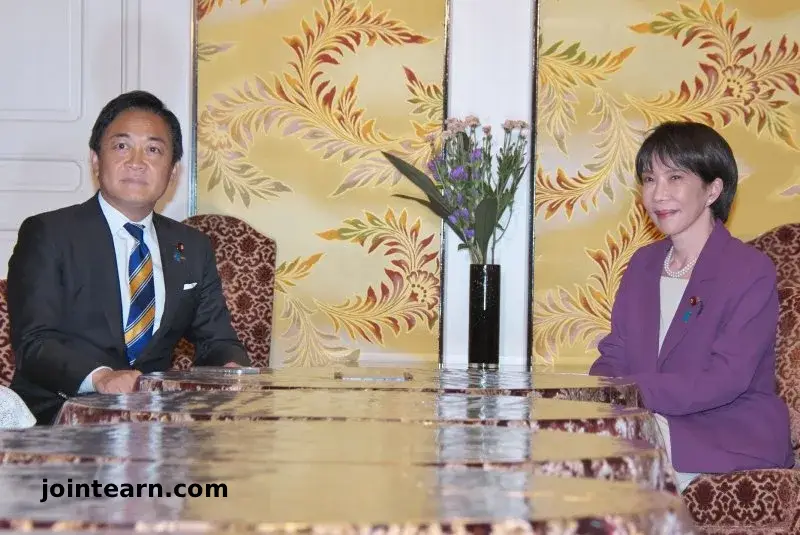
As Japan’s National Diet prepares to vote on the nation’s next prime minister next week, political maneuvering is intensifying across Tokyo’s power corridors. Rival parties are rushing to forge alliances that could determine whether Sanae Takaichi, head of the ruling Liberal Democratic Party (LDP), will succeed outgoing leader Shigeru Ishiba — and make history as Japan’s first female prime minister.
Coalition Realignment After Komeito’s Exit
The LDP, Japan’s dominant political force for much of the postwar era, faces a rare challenge to its leadership after the Komeito party withdrew from their 26-year coalition last week. The split has left Takaichi short of a working majority in the House of Representatives, forcing her to court new allies.
To secure power, the LDP has turned to the Japan Innovation Party (JIP), a right-leaning reformist bloc led by Osaka Governor Hirofumi Yoshimura. The party’s support could prove decisive when lawmakers vote for the next prime minister on Tuesday, October 21.
“We are open to constructive dialogue that benefits Japan’s future,” Yoshimura said following a meeting with Takaichi at the Diet. “Any coalition must be based on clear policy alignment.”
The LDP currently controls 196 of 465 lower-house seats and 100 of 248 upper-house seats — more than any other party, but still short of an outright majority.
Opposition Unites to Challenge Takaichi
Meanwhile, opposition parties are working feverishly to present a unified front capable of blocking Takaichi’s ascension. The Constitutional Democratic Party of Japan (CDP) and the Democratic Party for the People (DPFP) have each floated alternative candidates, including DPFP leader Yuichiro Tamaki, who is viewed as a moderate capable of bridging rival factions.
“Japan needs leadership that restores public trust and transparency,” Tamaki said at a press conference after meeting with Takaichi. “We must move beyond party politics and focus on real economic and social reforms.”
The opposition’s best hope may lie in persuading the JIP to side with them rather than the LDP. Such a coalition could fundamentally shift the balance of power in the Diet, disrupting decades of near-continuous LDP dominance.
Takaichi’s Determined Path to Leadership
Despite the mounting political intrigue, Takaichi remains confident in her prospects. Speaking to supporters in Tokyo, she declared that she “will never give up” on her quest to lead the government, emphasizing her commitment to fiscal reform, national security, and women’s empowerment.
If she wins Tuesday’s vote, Takaichi would become Japan’s first woman prime minister, a milestone that would symbolize a historic breakthrough in a country long criticized for its gender gap in politics.
“I will dedicate myself to ensuring Japan’s stability and growth,” Takaichi said in remarks reported by China Daily. “Our country needs steady leadership that can deliver results.”
Her leadership campaign has drawn both support and scrutiny for her conservative stances on defense, economic stimulus, and constitutional revision — policies closely aligned with those of former Prime Minister Shinzo Abe, her mentor.
Coalition Negotiations Intensify in Tokyo
As the clock ticks toward the Diet vote, backroom negotiations are accelerating. Leaders from multiple parties — including the LDP, JIP, CDP, and DPFP — held a series of closed-door meetings on Wednesday aimed at securing commitments and clarifying policy platforms.
Observers say the outcome will depend largely on whether Takaichi can convince JIP leaders that joining the ruling coalition offers greater influence over Japan’s economic and administrative reforms.
Political analyst Mikitaka Masuyama of the National Graduate Institute for Policy Studies said the coming days are critical:
“If the LDP and JIP reach an agreement, Takaichi will almost certainly become prime minister,” Masuyama noted. “But if the opposition unites around a single candidate, the vote could be much closer than expected.”
What’s at Stake for Japan
The leadership transition comes at a pivotal moment for Japan. The country is grappling with slowing economic growth, a shrinking labor force, and renewed regional security tensions involving China and North Korea.
Takaichi’s platform emphasizes national resilience — boosting defense spending, investing in advanced technology, and addressing demographic decline. However, her conservative views and hardline approach to constitutional reform have polarized voters.
The Diet’s decision next week will not only determine who governs Japan but also set the tone for its domestic and foreign policy heading into 2026.
“The world is watching how Japan handles this transition,” said Tokyo-based political consultant Keisuke Honda. “The next government must balance stability with innovation — and that won’t be easy in a divided parliament.”
🔑 Key Takeaways
- The Japanese Diet votes Tuesday, October 21, 2025, to choose the next prime minister.
- Sanae Takaichi, leader of the ruling Liberal Democratic Party, is the frontrunner but lacks a clear majority.
- The Japan Innovation Party (JIP) holds the balance of power after Komeito’s coalition exit.
- Opposition parties are seeking to unify behind Yuichiro Tamaki or another challenger.
- If elected, Takaichi would become Japan’s first female prime minister in history.
Leave a Reply